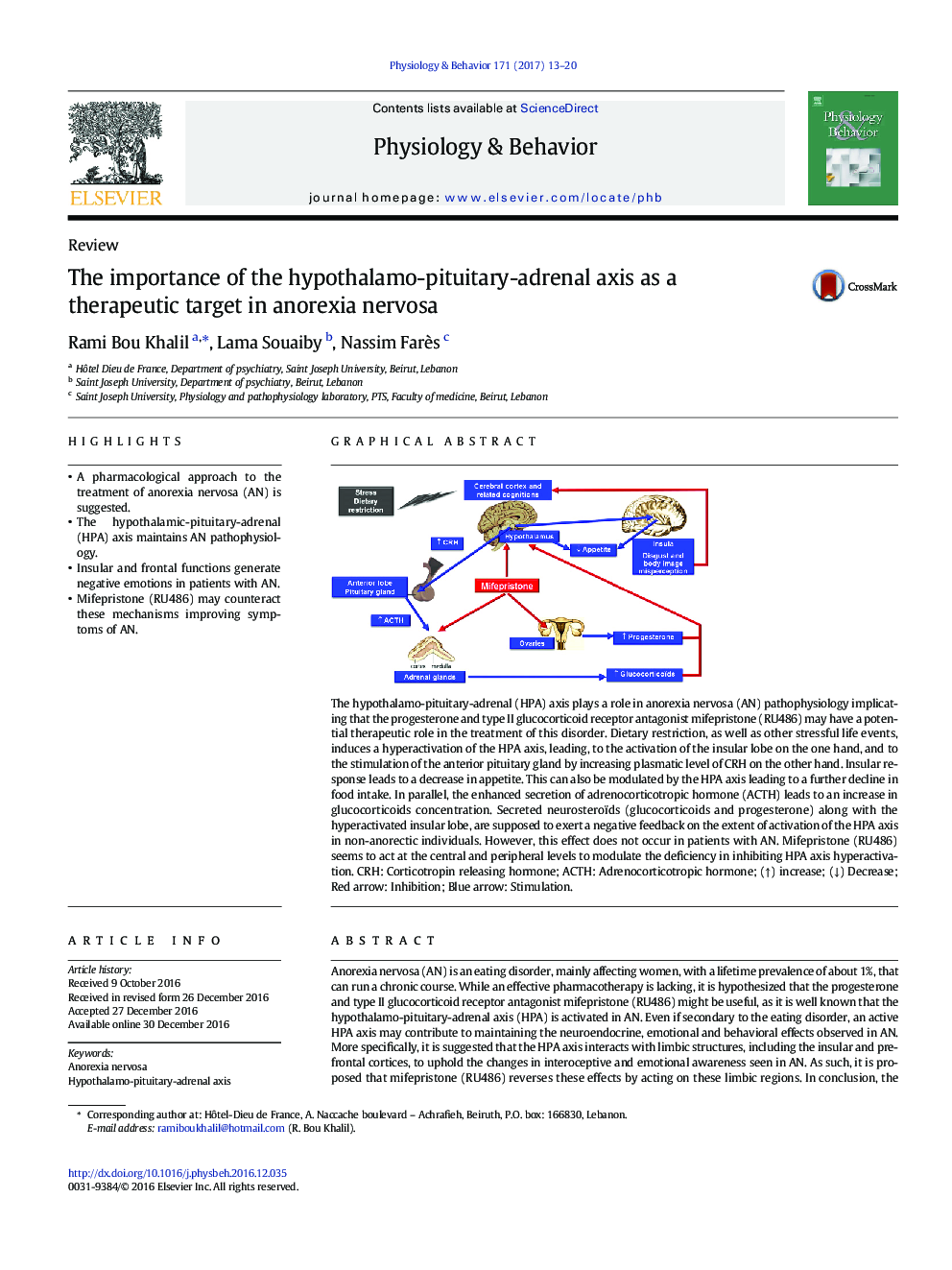| کد مقاله | کد نشریه | سال انتشار | مقاله انگلیسی | نسخه تمام متن |
|---|---|---|---|---|
| 5593816 | 1571148 | 2017 | 8 صفحه PDF | دانلود رایگان |
- A pharmacological approach to the treatment of anorexia nervosa (AN) is suggested.
- The hypothalamic-pituitary-adrenal (HPA) axis maintains AN pathophysiology.
- Insular and frontal functions generate negative emotions in patients with AN.
- Mifepristone (RU486) may counteract these mechanisms improving symptoms of AN.
Anorexia nervosa (AN) is an eating disorder, mainly affecting women, with a lifetime prevalence of about 1%, that can run a chronic course. While an effective pharmacotherapy is lacking, it is hypothesized that the progesterone and type II glucocorticoid receptor antagonist mifepristone (RU486) might be useful, as it is well known that the hypothalamo-pituitary-adrenal axis (HPA) is activated in AN. Even if secondary to the eating disorder, an active HPA axis may contribute to maintaining the neuroendocrine, emotional and behavioral effects observed in AN. More specifically, it is suggested that the HPA axis interacts with limbic structures, including the insular and prefrontal cortices, to uphold the changes in interoceptive and emotional awareness seen in AN. As such, it is proposed that mifepristone (RU486) reverses these effects by acting on these limbic regions. In conclusion, the theoretical efficacy of mifepristone (RU486) in improving symptoms of AN should be tested in randomized clinical trials.
The hypothalamo-pituitary-adrenal (HPA) axis plays a role in anorexia nervosa (AN) pathophysiology implicating that the progesterone and type II glucocorticoid receptor antagonist mifepristone (RU486) may have a potential therapeutic role in the treatment of this disorder. Dietary restriction, as well as other stressful life events, induces a hyperactivation of the HPA axis, leading, to the activation of the insular lobe on the one hand, and to the stimulation of the anterior pituitary gland by increasing plasmatic level of CRH on the other hand. Insular response leads to a decrease in appetite. This can also be modulated by the HPA axis leading to a further decline in food intake. In parallel, the enhanced secretion of adrenocorticotropic hormone (ACTH) leads to an increase in glucocorticoids concentration. Secreted neurosteroïds (glucocorticoids and progesterone) along with the hyperactivated insular lobe, are supposed to exert a negative feedback on the extent of activation of the HPA axis in non-anorectic individuals. However, this effect does not occur in patients with AN. Mifepristone (RU486) seems to act at the central and peripheral levels to modulate the deficiency in inhibiting HPA axis hyperactivation. CRH: Corticotropin releasing hormone; ACTH: Adrenocorticotropic hormone; (â) increase; (â) Decrease; Red arrow: Inhibition; Blue arrow: Stimulation.261
Journal: Physiology & Behavior - Volume 171, 15 March 2017, Pages 13-20
